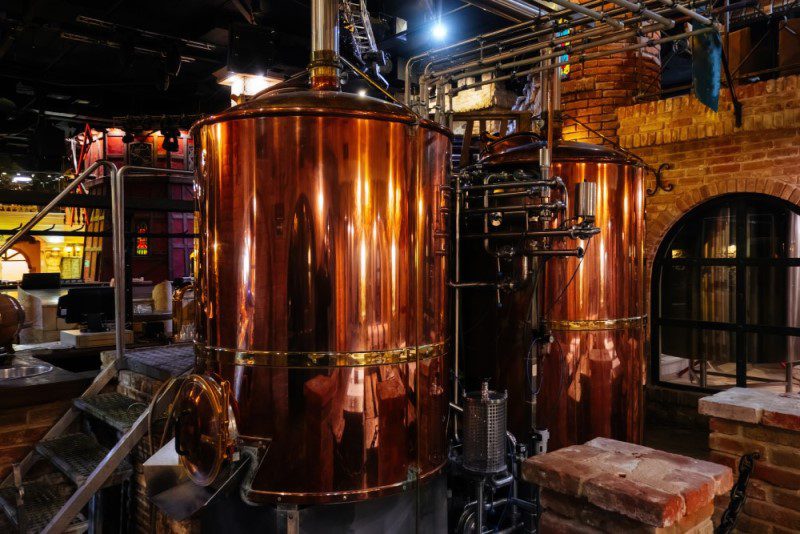The challenges of running a microbrewery

Many people dream of turning a passion for home-brewing into starting their own microbrewery.
But if you’ve already taken the leap, you’ll know that while it can be hugely rewarding, turning your hobby into a successful business isn’t easy.
Especially not in today’s business climate. From Brexit and Covid to sky-rocketing prices and pub closures, breweries big and small have had a lot on their plates. And then there are the challenges that businesses always face, such as ensuring you have the right insurance cover in place.
Let’s have a look at some of the biggest challenges of running a microbrewery in 2022, with some tips to help overcome them.
1. Rising costs
Businesses large and small have been hit hard by the recent spikes in energy prices, and microbreweries are no exception.
Alongside soaring energy prices, the cost of CO2, packaging and ingredients have also risen. Sadly, the result is many business closures.
Top tip: according to research published in July, 2 in 3 (65%) UK firms were expecting to pass on high costs and raise prices. If you need to increase prices, ensure you get the message right by communicating why you’re doing so and highlighting the quality of your beer.
Top tip: to avoid the risk of your business being underinsured, ensure that the value of all of the items that would make up your ‘sums insured’ (raw ingredients, stock, buildings you’re responsible for insuring) are up to date and you’ve made your insurer aware.
2. Insurance (or lack of)
Amid all of these challenges, it’s more important than ever to ensure your business is properly insured. At A-Plan, we’ve found that this often isn’t the case.
When determining the type of insurance you require, there’s a lot of factors to consider. Depending on your business, appropriate cover might include Public Liability, Theft Cover, Material Damage to cover buildings, equipment and stock, Business Interruption, Goods in Transit, Employer’s Liability and Product Liability.
For some micro-breweries, the right insurance can be make or break, as Nikki Kyriacou, business insurance specialist at A-Plan Insurance, explains: “I spoke to the owner of a microbrewery client, Lord’s Brewery Company, who were struggling with insurance. His current insurer was unable to offer renewal terms. He had no luck sourcing any sort of cover and was considering closing the business!”
Nikki adds: “Through our knowledge of the industry and the relationship we have a full range of insurers, we were able to get suitable cover, superior to his previous insurer and highlighted further exposures that could potentially give rise to a claim. He was very grateful for the advice, service and insurance policy we were able to put in place.”
“He invited me and my colleague to the great British beer festival in London, where we got to meet him and his team. He immediately came over and told everyone I had saved his business from going under which was very kind.”
Top tip: Be sure to talk to your broker, even just to ask about any additional cover that you may need. We know that breweries can come in all shapes and sizes so would be happy to guide you through your options.
3. It’s an increasingly crowded market
Microbreweries are often squeezed by larger companies buying out craft breweries and increasing their share of beer taps on the bar.
But on the flipside, research by SIBA has shown that consumers believe that genuine craft beer should be hand-crafted by a small independent brewery, with 50% saying the producer should be small and 48% that it should be independent.
Top tip: Use your marketing, especially on social media, to drive home the message that you’re a local business hand-producing craft beer on a small scale. Also consider hosting events, be active in your community, and connect with industry publications.
4. Skilled staff are hard to find
You’ve reached the point where you can no longer grow your production on your own, or with your existing team. But once it comes time to expand and grow your team, it can be hard to find staff with enough brewing experience and expertise.
Part of the problem, as identified by SIBA, the Society of Independent Brewers, is the lack of training provided by breweries. Only 41% of breweries provide specific training for their workforce, according to the organisation’s 2022 SIBA Members’ Survey.
Top tip: Find someone passionate and help them learn. Look into options for offering training and apprenticeships to retain and develop your team.
5. Younger people are drinking less
People are drinking less alcohol. This is particularly true for women and younger adults. The
number of 18-24-year-olds drinking beer fell significantly (12%) in 2022, to just 32%, according to research conducted by YouGov for SIBA.
Top tips: Consider doing more to appeal to female beer drinkers. Also try brewing low alcohol beers, as well as alternatives such as vegan or gluten-free beers. It can help too to make your brewery as environmentally friendly as possible and show off your credentials.
Some of the challenges and trends we’ve looked at above are hard to tackle. But you can do all you can to protect your business, including by ensuring you have the right insurance cover in place as your venture grows. If you need advice, then contact our specialist business branch on 0121 711 5466 and they will happily answer any questions you have.



